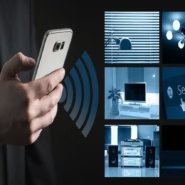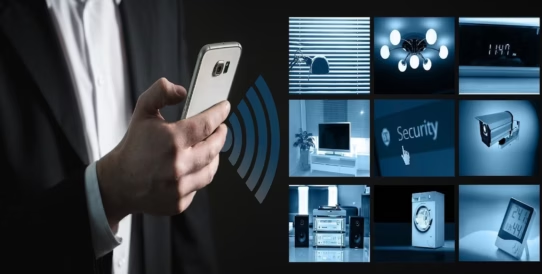Another noteworthy option is the AmeriTop 10W Motion Sensor LED Bulb, which delivers 806 lumens and features a dusk-to-dawn sensor. This bulb ensures automatic activation during nighttime motion detection, enhancing security and convenience in spaces such as bathrooms or entryways.
For broader coverage, the TORKASE 13W Motion Sensor LED Bulb emits 1100 lumens and is suitable for both indoor and outdoor settings. Its dusk-to-dawn functionality ensures it operates only in low-light conditions, making it a practical choice for garages or porches.
When selecting a motion-activated LED lamp, prioritize features like detection range, brightness, and energy efficiency to match your specific needs. Ensure the bulb is installed in an unobstructed fixture to maximize sensor performance.
::contentReference[oaicite:0]{index=0}
Choosing Compatible Smart Bulbs and Motion Sensors for Your Home
To ensure seamless integration between your lighting fixtures and motion detection devices, prioritize compatibility with your existing smart ecosystem. Opt for products that support universal communication standards like Zigbee, Z-Wave, or Matter, as these protocols facilitate reliable interaction between devices from different manufacturers.
When selecting a motion detection device, ensure it is compatible with your chosen lighting system. For instance, the GE Cync Smart Wire-Free Motion Sensor connects wirelessly to Cync Smart Bulbs, Smart Plugs, and Smart Switches, offering programmable motion settings and a replaceable battery rated to last over two years :contentReference[oaicite:0]{index=0}. Alternatively, the Philips Hue Indoor Motion Sensor integrates with the Philips Hue Bridge, enabling control of compatible appliances through the Hue app :contentReference[oaicite:1]{index=1}.
For a more integrated solution, consider lighting systems that incorporate motion detection technology. The WiZ Connected SpaceSense technology allows WiZ lights to automatically turn on when motion is detected, eliminating the need for additional sensors :contentReference[oaicite:2]{index=2}. Similarly, Philips Hue’s MotionAware feature enables existing Hue lights to detect motion using RF sensing, without the need for external hardware :contentReference[oaicite:3]{index=3}.
Additionally, evaluate the power source and installation requirements of your chosen devices. Battery-powered sensors offer flexible placement options but may require periodic battery replacements. Wired sensors, while offering continuous power, may necessitate professional installation. Assess your home’s infrastructure and your comfort level with installation tasks to select the most suitable option.
By carefully selecting compatible lighting and motion detection devices that align with your existing smart ecosystem and installation preferences, you can create a cohesive and responsive environment tailored to your needs.
::contentReference[oaicite:4]{index=4}
Configuring Motion-Activated Lighting for Different Rooms
For the kitchen, install a ceiling-mounted fixture with a 360° detection range and a 16-foot radius. This ensures illumination upon entry, especially when hands are occupied. The MATICOD Motion Sensor Light :contentReference[oaicite:0]{index=0} is suitable for this purpose.
In hallways, opt for wall-mounted units that activate when movement is detected within a 120° angle. The Guankai 8 Pack Motion Sensor Stair Light :contentReference[oaicite:1]{index=1} is ideal for this setting.
For bathrooms, choose fixtures with a 180° detection angle and a 42-foot range. The HGGH Motion Sensor Outdoor Lights :contentReference[oaicite:2]{index=2} can be adapted for indoor use to meet these requirements.
In bedrooms, consider under-bed or under-cabinet lighting that activates within a 16-foot range. The MATICOD Motion Sensor Light :contentReference[oaicite:3]{index=3} is also suitable for this application.
For staircases, use battery-operated units with a 16-foot detection range and a 120° angle. The STAR-SPANGLED 3 Pack 7” Motion Sensor Lights :contentReference[oaicite:4]{index=4} are appropriate for this purpose.
For outdoor areas like garages or porches, select fixtures with a wide detection range and dusk-to-dawn functionality. The VerRon Motion Sensor Outdoor Light :contentReference[oaicite:5]{index=5} meets these criteria.
Ensure that the installation height and positioning of each unit are appropriate for the specific room to achieve optimal performance.
Setting Schedules and Rules to Minimize Energy Use
Set precise time ranges for each light zone instead of leaving everything on standby. For example, configure the kitchen to stay bright only from 6:00 AM to 8:30 AM and from 6:00 PM to 9:00 PM. Outside these hours, keep it off or dimmed to 20% brightness. This single rule can reduce power consumption by up to 40% per month.
Group fixtures by area and activity level. In hallways or storage spaces, lights should activate only upon movement detection and stay active for a maximum of 2 minutes. In living areas, apply different logic – low brightness in the evening, full intensity only when activity is detected.
Link brightness settings to sunrise and sunset. Most controllers let you sync behavior with daylight data. For instance, if sunset is at 7:20 PM, lights can fade in gradually at 7:00 PM and fade out at midnight. This avoids full illumination when ambient light is already sufficient.
Set specific “vacation rules” to mimic occupancy. Randomize on/off cycles within a short time window – e.g., 7:10–7:30 PM – to create natural patterns while keeping total runtime short. These small intervals save energy without making the home appear empty.
Use products that support rule customization through reliable apps. Examples include:
- Philips Hue White and Color Ambiance A19 – adjustable brightness and schedule setup per room.
- TP-Link Kasa KL130 – supports sunrise/sunset triggers and remote time settings.
- Govee WiFi LED Light Bulb – allows time-based dimming profiles via app control.
Review usage reports weekly. Most systems show energy graphs in their mobile dashboards. Analyze which zones remain lit longer than necessary and shorten those durations. Regular tuning keeps consumption balanced without compromising comfort.
Proper scheduling transforms your lighting habits into predictable, low-waste routines. With just a few automated rules and time-based settings, you maintain comfort while cutting electricity bills significantly.
Q&A:
How do motion sensors actually control smart bulbs in a home lighting system?
Motion sensors detect movement within their range using infrared or ultrasonic technology. When motion is detected, the sensor sends a wireless signal—usually via Wi-Fi, Zigbee, or Bluetooth—to the smart bulb or the connected hub. The bulb then turns on according to the predefined settings. Once no movement is detected for a set period, the bulb can automatically turn off. This helps reduce unnecessary energy use and adds convenience to daily routines.
Can I use smart bulbs with motion sensors without a smart home hub?
Yes, many modern smart bulbs can communicate directly with motion sensors using Wi-Fi or Bluetooth, so a separate hub isn’t always required. However, some ecosystems, like Zigbee-based systems (for example, Philips Hue), rely on a hub for better reliability and coordination between devices. Using a hub can also provide advanced automation options and allow integration with other smart devices in your home.
Will motion-activated smart lights work if the internet connection goes down?
If your setup relies entirely on Wi-Fi, the automation may not work during an internet outage. However, if your motion sensors and smart bulbs communicate via a local protocol such as Zigbee or Z-Wave, they can still function offline since they exchange signals directly within the local network. This makes local connections more dependable for critical automations like hallway or security lighting.
Is it possible to set different brightness levels or colors based on the time of day?
Yes, most smart lighting systems allow you to create automation schedules or conditional routines. For instance, you can program lights to turn on softly with a warm color temperature in the morning, and switch to cooler, brighter tones during the day. At night, the system can lower brightness automatically when motion is detected, providing gentle illumination that doesn’t disturb sleep patterns.
Are motion sensors sensitive enough to detect small movements like a pet walking by?
That depends on the sensor model and its sensitivity settings. Many sensors allow you to adjust detection levels or even ignore motion from small objects or animals. For example, you can configure the sensor to respond only to human-sized motion, preventing your lights from turning on every time a cat or dog passes by. Placement height and angle also play a role in fine-tuning detection accuracy.
How can I make my smart lighting setup respond differently in various rooms using motion sensors?
You can create separate automation rules for each room based on your needs. For instance, in the hallway, you might set the lights to turn on at full brightness when motion is detected and then switch off after one minute of inactivity. In the bedroom, you could program softer lighting that stays on longer or only activates during nighttime hours. Most smart home apps, such as Alexa, Google Home, or SmartThings, allow you to adjust brightness, color, and delay time individually for each zone. This flexibility lets you design lighting behavior that matches how each space is used throughout the day.
Do smart bulbs and motion sensors consume a lot of power when they’re on standby?
Not really. Both devices use very little energy when idle. A typical smart bulb might draw around 0.3 to 0.5 watts on standby, while a motion sensor usually consumes less than 0.2 watts. Over a month, that adds up to just a few cents on your electricity bill. The energy savings from having lights automatically turn off when no one is around generally outweigh the small standby cost, making automation both convenient and economical.







